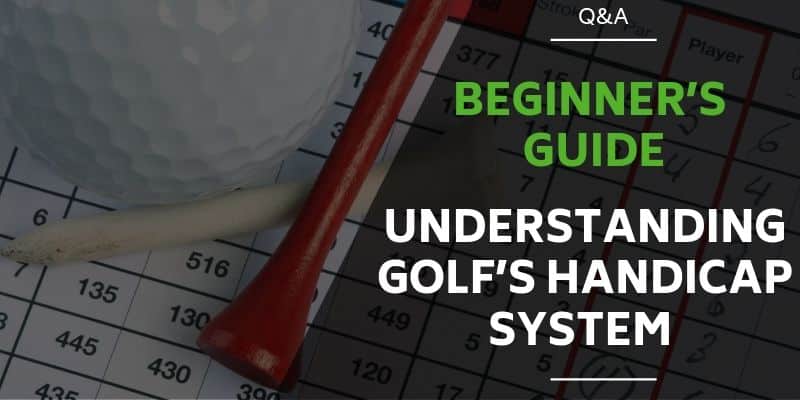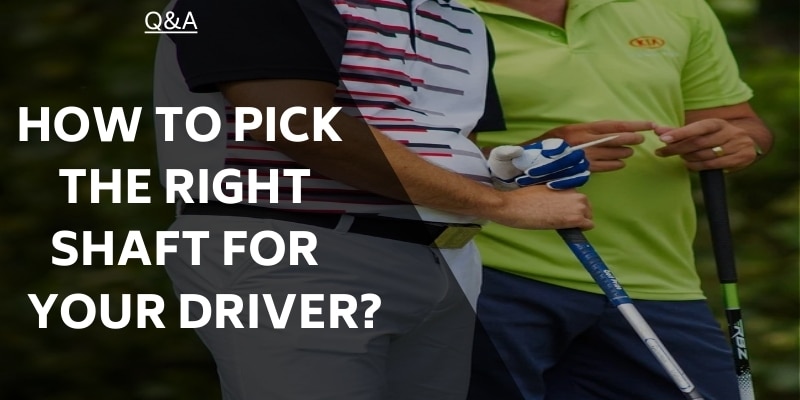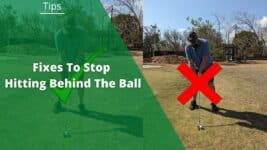In 2010, The Bleacher Report released their list of the 50 Greatest Golf Quotes. Number 1 on that list was a quote by Winston Churchill which sums up the game accurately. He quipped,
“Golf is a game whose aim is to hit a very small ball into an even smaller hole, with weapons singularly ill-designed for the purpose.”
The moral of the quote is that golf is a target sport, and inaccuracy will not cut it. That is why in this post, I am going to teach you how to aim in golf. I will offer a few tips and instructions that have worked for the golfers I have coached over the years.
What Does It Take To Aim Accurately In Golf?
Aiming is only one part of the process you will still need to execute your shot. However, knowing how to aim in golf is vital in improving your fairway and green in regulation stats.
You will need to get into a pre-shot routine in which you undertake a few steps to ensure that your shot lands in the desired area. It is not rocket science and only requires common sense.
When aiming, you will need to factor in your natural shot shape and adjust your aim accordingly. Finally, as if that wasn’t enough to take in. It is necessary to account for the wind and slopes that will impact the result of your shot.
Steps To Take To Aim Properly and Accurately In Golf
Learning how to improve your aim in golf involves several steps and requires you to consider various factors. From assessing the weather conditions, and the course layout to compensating for your natural shot shape. Aiming is more detailed than addressing the ball and swinging.
Step 1: Analyze The Layout Of The Hole
Before aimlessly aiming at a target, take a look at what lies ahead of you to give you an idea about the best shot to hit. If the hole is flat, you can aim down the center of the fairway and rip it. However, if it is engulfed with slopes and hazards, determine where the safest place to land the ball would be.
Step 2: Check the Wind Direction and Strength
Check the wind speed and direction to help you understand how far left or right you need to start the ball. The easiest way to determine wind speed and direction is to throw a few blades of grass into the air and see where she blows. This may not sound like the highest-tech solution, but it still works for Tiger, and there is no reason it can’t work for you.
However, if you are after a more accurate wind speed reading, you can pull a Dylan Frittelli and whip out your compass. Like a rangefinder in standard mode, compasses are permitted in tournaments to gauge win direction. Surprisingly drawing compasses are outlawed, as Bryson De Chambeau found out in 2018.
Besides a compass, Rule 4.1a (2) permits you to use a weather forecast application to measure wind speed, humidity, and temperature. Once you have an idea of the wind direction and speed, you can factor this into your final setup.
Step 3: Think About Your Shot Shape
Once you have factored in the wind and the layout of the hole. The next step is to think about your shot shape. For example, if you are a right-hander that hits a fade, you will need to compensate by aiming left of your target. Similarly, if you hit a draw, you will need to aim to the right of your desired target.
Remember to account for the wind. If you hit a left to right shot and you have a crosswind blowing in that direction, you will need to aim further left than usual. Those of you with a right to left shot shape need to aim further right than usual. If crosswinds are howling in the same direction.
Step 4: Tee The Ball Up
Where you place your ball on the tee box can impact the line of your shot. You need to understand what would be the most helpful to you.
If you hit a right to left shot shape, you may find teeing up on the left side of the tee box benefits you the most. While golfers with a left to right shot shape will thrive when teeing off on the right side of the box.
It is pertinent because it opens up the side of the hole that suits your shot shape. This sets you up for the right line to land the ball in the middle of the fairway.
Step 5: Pick A Target and a Starting Line
The majority of golfers likely skip steps one through three and proceed straight to teeing up and picking a target. This part requires two steps. The first step is to stand behind your ball and pick a target in the distance where you want it to end up. Standing behind the ball gives you an unobstructed view of the fairway to identify a specific target to aim at.
PGA golf professional Rick Shiels recommends that once you have picked out a target in the distance and draw an imaginary line back to a few feet in front of your ball. That will be your starting line. Aiming for a target a few feet in front of you makes it easier to see if you are lined up correctly. If possible, look for a divot or broken tee to help you visualize.
Step 6: Position Your Clubhead In Line With Your Target
Now that you have picked out a target a few feet in front of you, the next step is to set up for your shot. Place your club head directly behind the ball, and check that it is in line with your target.
Step 7: Position Your Feet Parallel To The Target Line
You are almost ready to execute your shot, but there are few more areas to cover. This step requires you to adjust your stance to aim parallel to the line of the target. This setup will enable you to swing straight back and follow through to achieve your desired shot result. Facing your feet on any other line will likely result in a wayward shot.
There are a few methods you can use to ensure you are aiming parallel to the line of the target it depends on your preference.
The first and most common is to place the shaft of your clubs below your knees. Then follow the line to see where you are aiming. Alternatively, you can rest your club on the ground parallel to your feet to determine where you are aiming.
Step 8: Position Your Shoulders Parallel To The Target Line
The second to last step to help you aim more accurately is to ensure that your shoulders are square. If you dip your leading shoulder, you are setting yourself up to pull the ball. Conversely, if you drop your trailing shoulder, a pushed strike is coming your way, as PGA golf professional Chris Ryan explains in this video.
To make sure that your shoulders are square, turn your head to face directly over your front shoulder. If you are lined up correctly, you should be looking at a line parallel to the target.
Step 9: The Final Check
Now that you are lined up and ready to strike your ball. Complete one last check to ensure that you are aiming at your target.
With your clubhead behind the ball and your feet and shoulders parallel to the target, take one last look at the area in front of you to make sure you are still aiming at your target. If you are unable to see your desired target, step away from the ball and setup again.
Final Thoughts
I hope these tips offer you a new perspective on how to aim in golf. During your next round, apply these steps and see if it helps you increase your fairways and greens in the regulation count.
In conclusion, I must add that even if you know how to aim, it does not guarantee that you hit a good shot. What it does do is help to keep you in play, even on off-center strikes.
Related Articles
- How To Improve Your Chipping; See Better Results & Lower Scores
- How to Drive a Golf Ball Further; Perfecting Your Distance.
- How To Use A Golf Rangefinder? And The Benefits It Will Bring!
Nick is the founder of GolfSpan and an avid golfer. He's not quite a pro but has over 15 years of experience playing and coaching golfers worldwide. His mission is to bring the golfing community a better experience when it comes to choosing the right golf gear and finding the right setup for your game.






